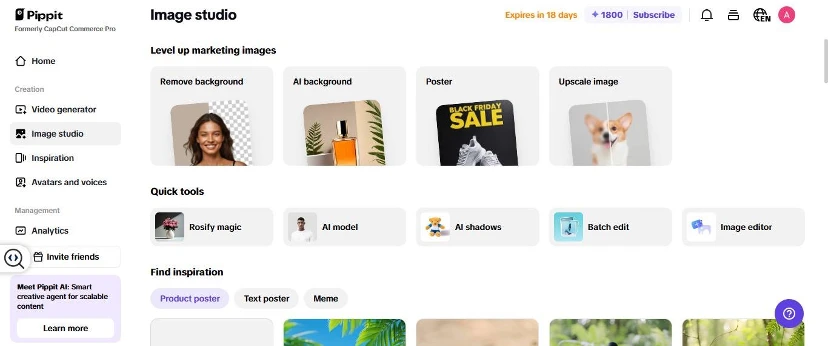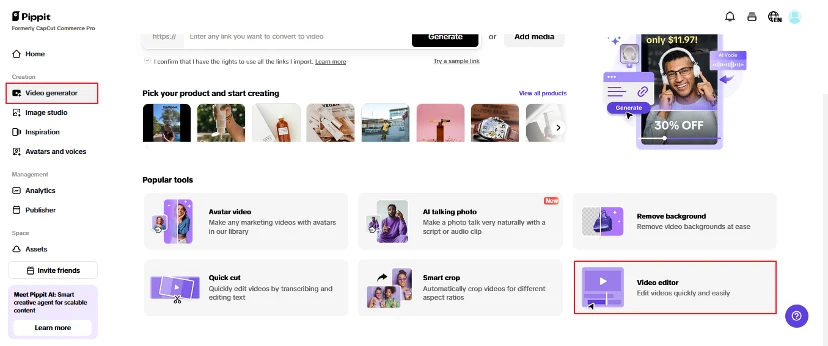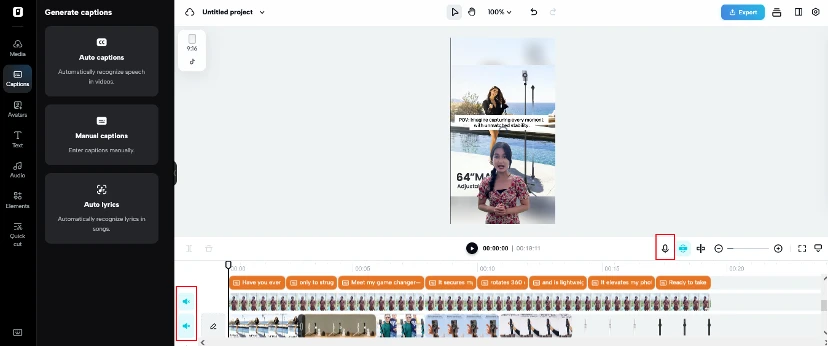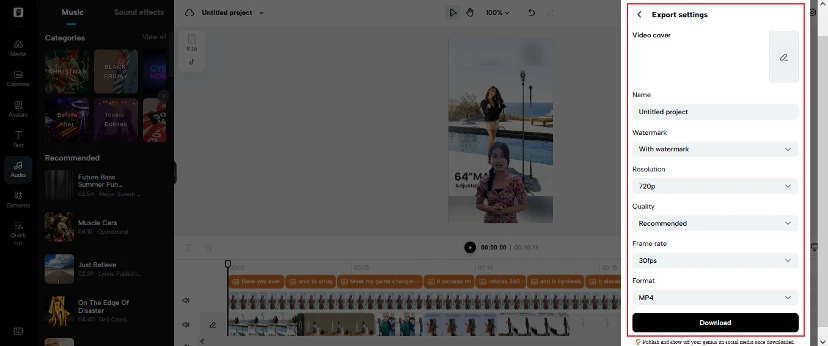Mute the Noise, Boost the Message: How Silent Videos Are Dominating Multilingual Marketing in 2025
June 3, 2025
In a world where everybody's screaming for attention, quiet is rapidly becoming the loudest voice in the room.
Hello 2025—the age of silent satisfaction. Brands remove sound from video and embrace motion graphics, captions, and visual narrative to communicate universally across cultures, languages, and needs of accessibility. Whether it's a makeup tutorial on Instagram, a SaaS guide on LinkedIn, or a worldwide campaign on TikTok, mute videos are not only living, they're thriving.
This post explores the strategy behind this new generation of marketing. You'll find out why taking out the sound doesn't have to equal losing effect—and how a video editor with Pippit, an advanced AI video generator, which can assist you in creating content that affects, even in utter silence.

With autoplay videos set to mute, your visuals need to carry the load from the opening moment.
The Rise of the Silent Scroll
With autoplay videos set to mute on most social media sites, your visuals need to carry the load from the opening moment. If your video relies solely on sound—such as music, voiceovers, or narration—without compelling visual narration, there's a good chance you're killing the attention of your viewers before your message even starts. Silent videos, on the other hand, are made for this space. Brands are adopting this trend with on-screen text, animation, and emotive imagery that can communicate emotion, value, and intent—all without creating one noise.
In a nutshell? Silent scrolls are revolutionizing the game. If your video can't speak for itself without sound, it won't make it past the swipe.
Multilingual by Design
When you take the audio away, you take the language barrier with it.
Quiet videos enable brands to produce content that moves, without the need for costly voiceovers in various languages. It only requires visual hints and localized text overlays to localize the same video for regions.
Picture releasing a single video in five nations. Rather than dubbing it into five languages, you silence it and post five caption versions. It's faster, cheaper, and more responsive. For borderless companies and global teams, this method isn't only wise, it's imperative.
Accessibility that Speaks Volumes
Accessibility is no longer a nicety, it's standard.
Your content should be accessible to everyone, including those who are Deaf or hard of hearing. By stripping away audio and thinking visually, you make a space for everyone. Silent videos naturally take advantage of closed captions, emotive motion, and even ASL overlays. These features make your video accessible to more people, both adhering to today's standards and fostering greater trust with a wider variety of audiences.
You’re not just marketing. You’re showing that your brand cares.
Why Quiet Content Converts Better
Silent videos tend to outdo the regular videos with sound, particularly in the initial few seconds. User tests have proven that users spend more time on visually descriptive and captioned videos even if they never tap for audio.
Why? Quiet content forces artists to be more innovative. You must create imagery that immediately gets noticed and clearly conveys your message. That layer of cause makes your content stickier, and more apt to prompt action.
The Visual Language of Modern Marketing
Let’s talk creative execution.
Silent videos don't refer to lowering the volume. They refer to raising all the other visual elements:
- Text must be large, readable, and timed to perfection.
- Motion graphics should reinforce the message without overloading the eye.
- Characters, avatars, or actors should be expressive enough to convey tone through facial expression and body language.
The transition is making designers into storytellers and marketers into visual directors. It's a new playground of creativity, and it's more exciting than ever.
How to Remove Audio from Video Using Pippit
Ready to make your own soundless masterpiece? Let's go through how to mute a video with the simple-to-use Pippit's audio remover video tool.
Step 1: Open Video Editor
Begin by logging into Pippit and going to the Video Editor area under Video Generator on the home page. Tap Upload to import your video file from your device or cloud storage. After it has been uploaded, drag the video file into the timeline. The user-friendly design makes editing seamless, whether beginning from scratch or editing like a pro.

Step 2: Remove Audio from Video
Select it by clicking on the video clip in the timeline. Then, locate the Volume control on the timeline and choose it to mute the original audio track entirely. If you wish to introduce something new, click Record Audio to record your own voiceover or upload a soundtrack. You can also browse Pippit's embedded music library to locate sound effects. Under the Audio tab on the right-hand side of the menu, there are options such as fade-in and fade-out, among others that can be used to customize your final video.

Step 3: Export & Share Video
Once you're satisfied with the muted version, preview the entire video to ensure everything is just perfect. Press Export, select your resolution and format, such as MP4, and save it on your device. You can even share directly to Instagram, YouTube, or TikTok from within the platform. With Pippit's remote audio tool, your content is ready to impact, quietly.

Use Silence as a Strategy, not a Shortcut
It will seem counterintuitive at first—taking away a fundamental sense such as hearing from your content. But in reality, silence puts you more in charge of how your message is received. Silence takes away assumptions. It makes your tale accessible to every language, every capability, and every nook and cranny of the algorithm.
It's not a downgrade, it's a creative upgrade.
As we progress further into 2025, look for more brands to fall silent by design. Not because they have nothing to say, but because they want everyone to listen—regardless of where they are, what language they speak, or how they consume content.
So go ahead. Mute the noise. Amplify the message. And let your images speak for themselves.
Related content
